Integra
Flight Training Device

TRAINING DEVICES TAILORED TO YOUR NEEDS
When you work with TRU Simulation™, you’ll get a team who listens to your needs for today and tomorrow. Together we’ll consider your training requirements and financial realities to help you select from our full lineup of devices—supporting ab-initio to type rating pilot training.
Discover high quality training balanced with an attractive price when compared to Full Flight Simulators (FFS). TRU Simulation™ is an expert at building the most advanced FFS and our Integra Aura™ and Integra Horizon™ Flight Training Devices (FTD) benefit from the same software baseline and advanced design delivering the highest fidelity and realism for this category of simulation.
Get StartedSimulator Qualifications
FAA, TC, ANAC, CAAC, CASA, JACB, GACA FTD 4,5,6,7
EASA, DGCA, GCAA FNPT II/III, FTD 2/3
JET
- Cessna Citation M2
- Cessna Citation CJ3/CJ3+
- Cessna Citation CJ4
- Cessna Citation Ascend/XLS+
- Cessna Citation Latitude
- Cessna Citation Longitude
- Embraer Phenom 100EV
TURBOPROP
- Beechcraft Denali
- Cessna Caravan
- Beechcraft King Air C90
- Beechcraft King Air 250/260
- Beechcraft King Air 350/360
- Cessna SkyCourier
- DHC-6 TWIN OTTER
- Bombardier CL415
PISTON
- Cessna Skyhawk 172
- Beechcraft Baron G58
- Cirrus SR22
HELICOPTERS
- Bell 412
- Bell 429
- Bell 505
- Bell 525
- Leonardo AW139
- Leonardo AW169
- Airbus H125
- Airbus H145
SIMULATOR COMPONENTS
The required components of an FTD are largely defined by aviation regulators. While these regulations vary from country to country, most are aligned with the FAA (14 CFR Part 60) or EASA (CS-FSTD) which are similar in their requirements. Integra Aura™ and Integra Horizon™ simulators meet or exceed all regulatory requirements, but instead of a one-size-fits-all approach like many other simulator manufacturers, TRU Simulation™ prides itself on customizing the training device to meet the customer’s specific needs.
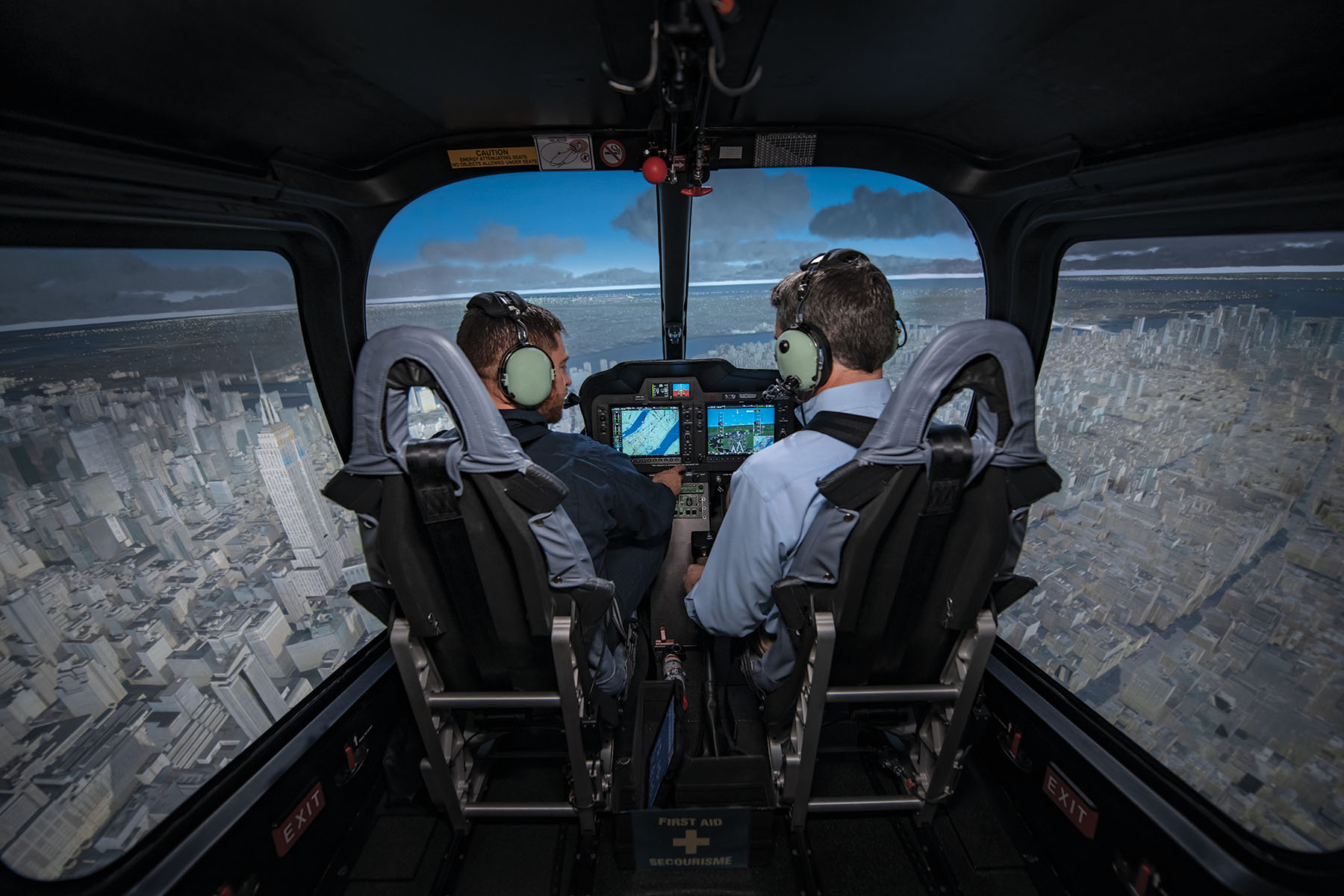
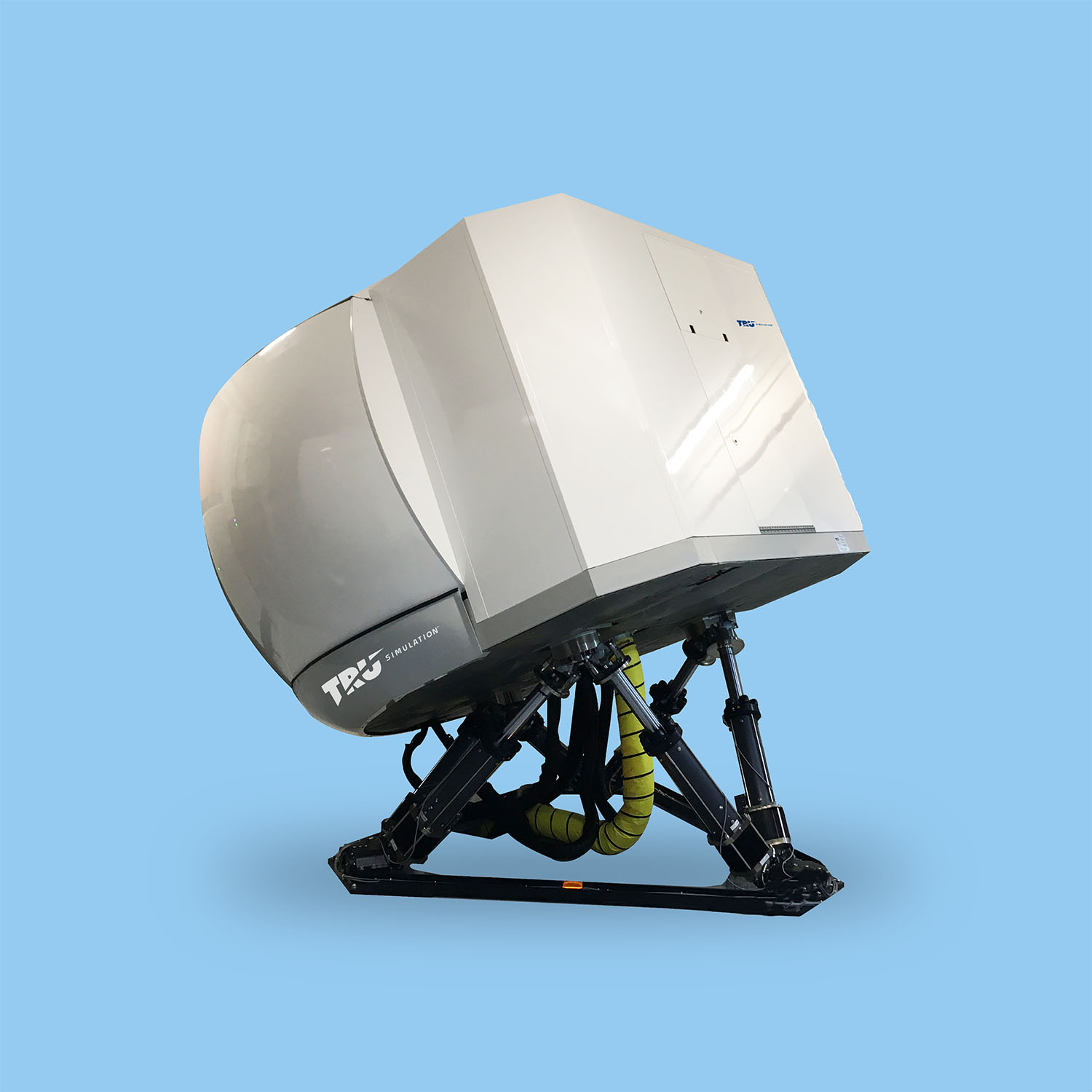
MINI-MOTION FTD SIMULATOR
Fixed-wing FTDs and low-level rotorcraft FTDs are typically not equipped with a motion system in order to save on costs as it's not a regulatory requirement. However, TRU Simulation™ has a design to fit every need including mini-motion FTDs that create a truly immersive flight training experience. Our level 7 FTDs elevate the training experience by including a Six Degrees of Freedom (6DOF) electric motion system with small stroke actuators. This state-of-the-art system combines easy to replace Commercial Off The Shelf (COTS) computer hardware with TRU Simulation™ proprietary REALCue™ motion cueing software creating a highly realistic flight experience. TRU Simulation™ eMOTION™ Control Panel with intuitive Graphical User Interface (GUI) makes testing, running diagnostics and manual operations easy and efficient.
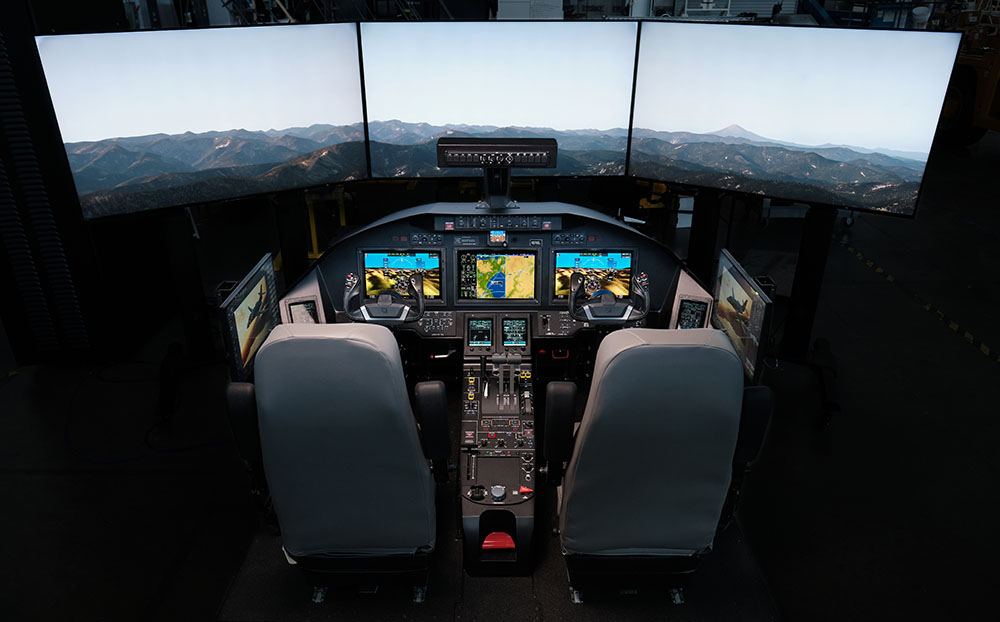
VISUAL
The visual systems are highly customizable to fit the customer's desired needs. Displays can range from high-definition televisions to large wrap around visual systems using the latest projectors. All visual systems are designed to create a bright and clear visual scene with an Image Generator (IG) capable of displaying many different scenes and special effects including:
- High definition airport models.
- Full atmospheric and environmental effects such as clouds, fog and storms.
- Various lighting conditions including day, dawn, dusk and night.
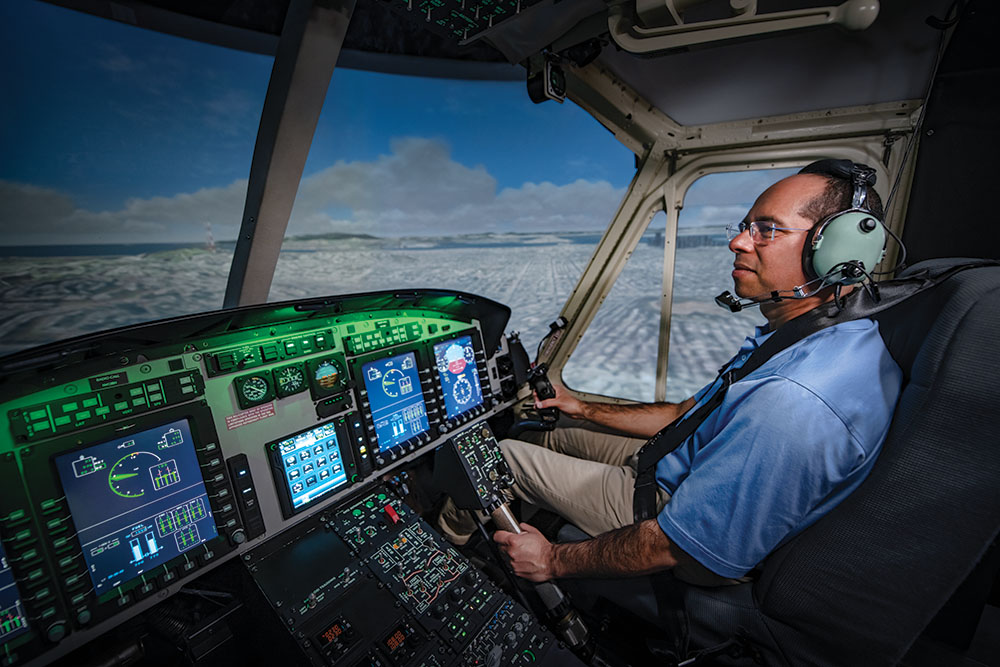
FLIGHT CONTROLS
TRU Simulation™ has a long history of producing the most advanced Control Loading System (CLS) in the industry. Our latest generation digital electric CLS provides a high fidelity, realistic force-feel simulation exceeding all simulator regulatory requirements. In fact, TRU Simulation™ uses the same control loading technology in our FTD products that drives our FFS products.

INSTRUCTOR OPERATING STATION (IOS)
The TRU Simulation™ IOS combines powerful components and features with an intuitive user interface to enhance the instructor’s ability to effectively manage the simulator. Two touchscreen displays are used to control and navigate the IOS. The IOS also supports maintenance functions such as Qualification Test Guide (QTG) testing, operational readiness tests and troubleshooting. An optional wireless tablet, known as the Remote Instructor Control Unit (RICU), allows the instructor to control the IOS from anywhere in the simulator environment.
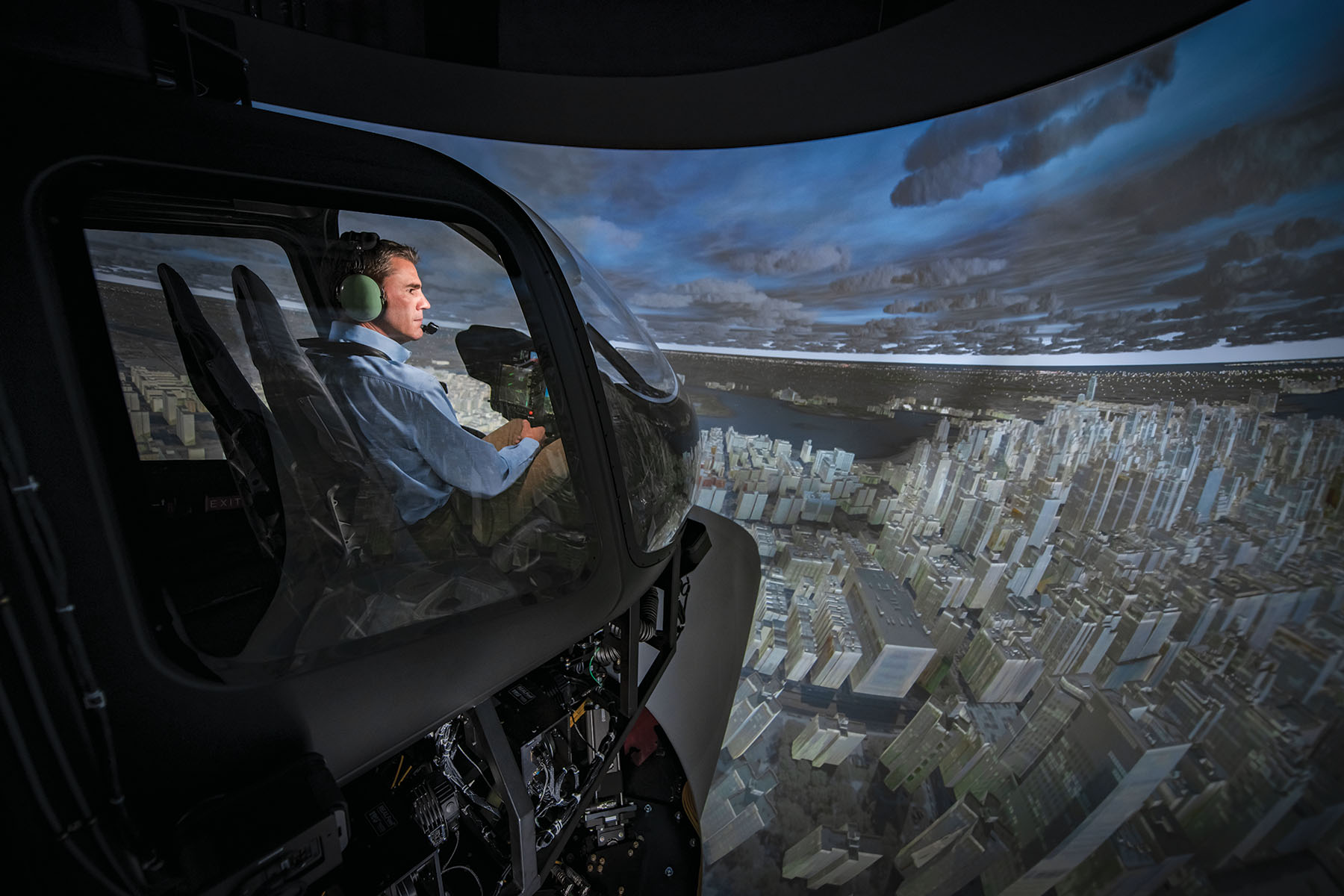
SIMULATOR OPTIONS
In addition to the core simulator components found in the Integra Aura™ and Integra Horizon™ simulators, you can choose from a variety of options to enhance device capabilities based on unique requirements.

CUSTOM VISUAL SCENES
Unique visual scenes and custom airfields can be added to any TRU Simulation™ simulator to create personalized and exciting training scenarios. While the possibilities are nearly limitless, examples include:
- Off-airport landing on non-maintained surfaces, sloped terrain or confined area
- Smoke and fire scenes
- Oil and gas (Offshore)
- Cargo/Long line vertical reference
- Search and rescue operations
- Emergency Medical Services (EMS)
- Night Vision Goggles (NVG)
- Military and defense scenarios
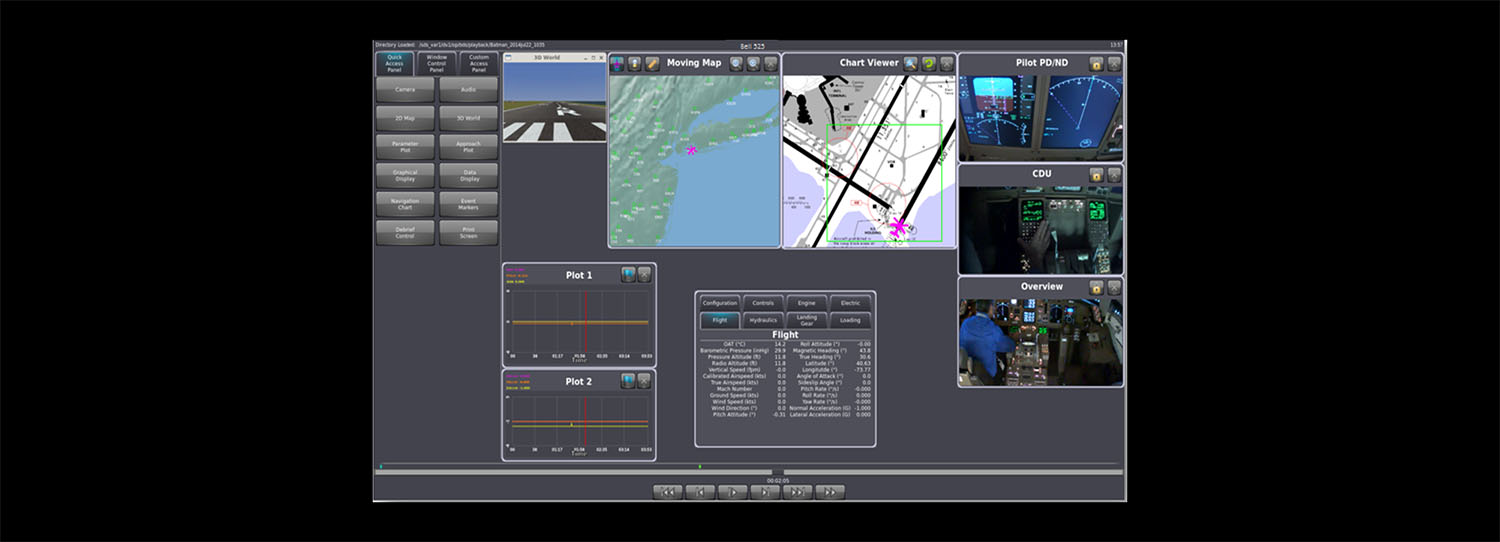
DEBRIEF SYSTEM (DBS)
The DBS makes simulator training session debriefing more effective. The system can capture and combine information from the avionics as well as audio and video of the actual session using mounted camera(s). When the training session is complete, the IOS-controlled system transfers video, audio, moving map, navigational charts, instrument displays and more to the debrief station outside of the simulator for playback.
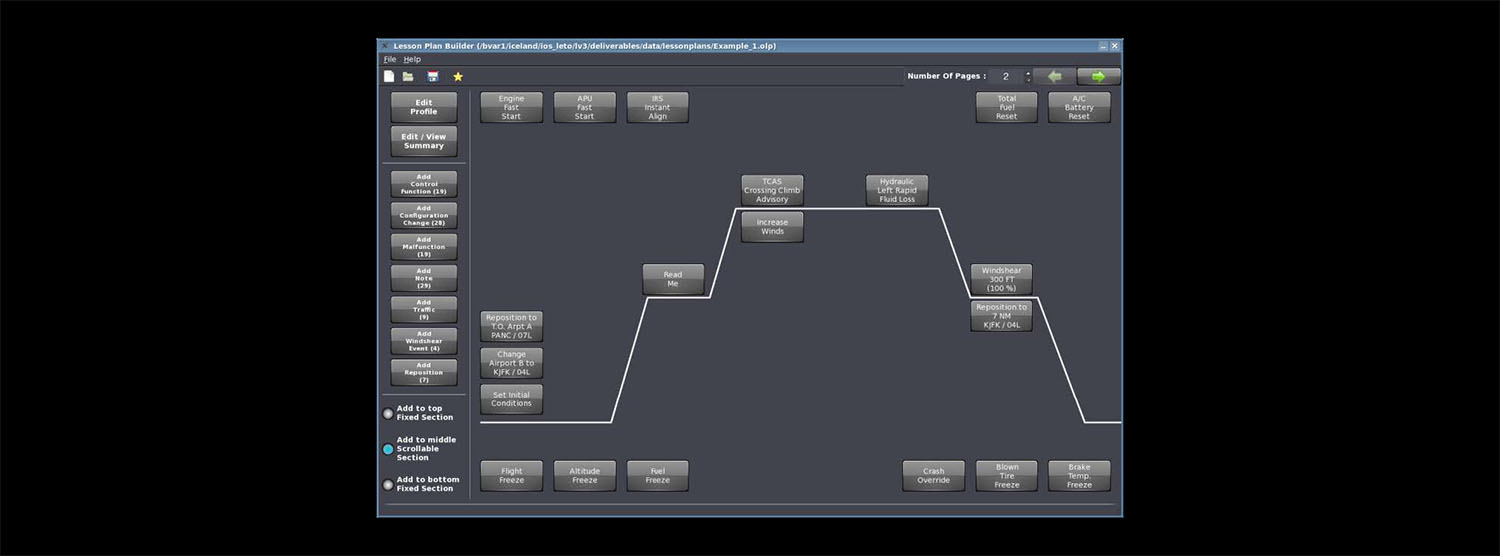
LESSON PLAN SYSTEM (LPS)
Managing everything that goes into a training session can be a challenge for instructors. The LPS makes training more efficient by providing a predetermined sequence of events for the instructor to follow. Using the lesson plan builder, instructors can create lesson plans for each training session that are accessed from the IOS making training session management easier than ever.
Integra
FTD Lineup
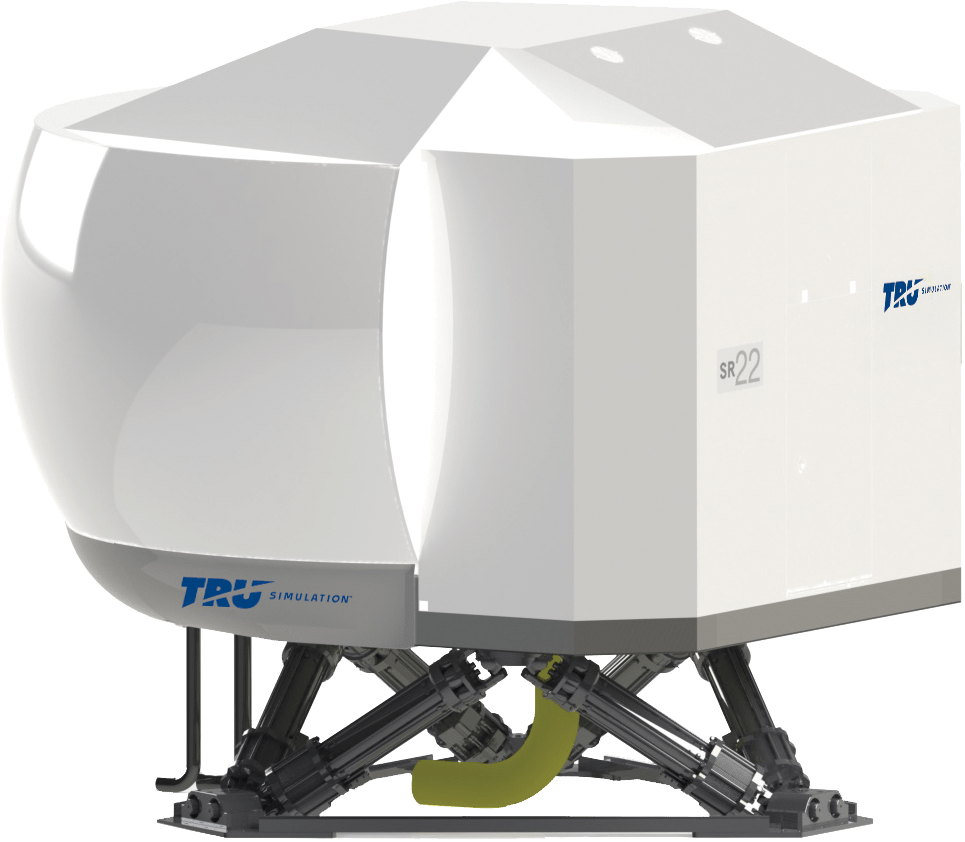
Fixed-Wing Mini Motion
Features:
- 220° X 50°
- 6 DOF Mini-Motion
- Active
- Yes
- 33ft x 27ft x 15ft
(10.1m x 8.3m x 4.6m) - Initial/Recurrent Training
- FAA FTD 6/7
EASA FNPT II / FTD 2
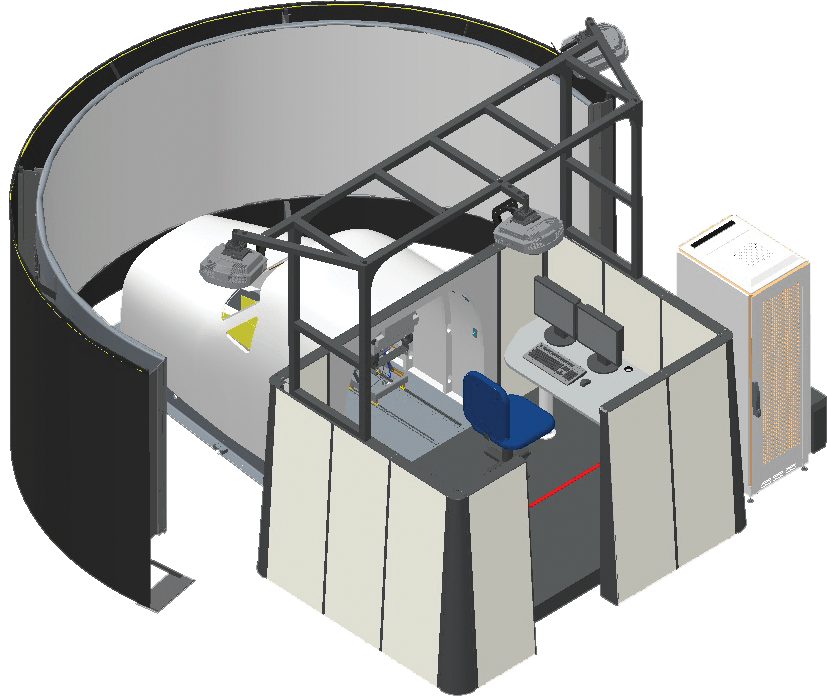
Fixed-Wing Widescreen
Features:
- 220° X 40°
- None
- Active
- Yes
- 16ft x 20ft x 13ft
(4.9m x 6.1m x 4.0m) - Initial/Recurrent Training
- FAA FTD 6
EASA FNPT II / FTD 2
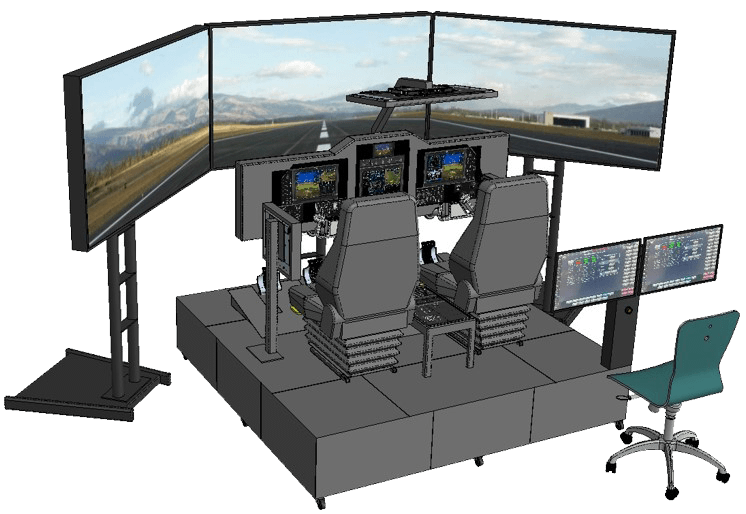
Fixed-Wing 3 Screen
Features:
- Three 60" HD Televisions
- None
- Passive or Active
- No
- 10ft x 12ft x 10ft
(3.1m x 3.7m x 3.1m) - Procedural Training
- FAA FTD 5
EASA FTD 1
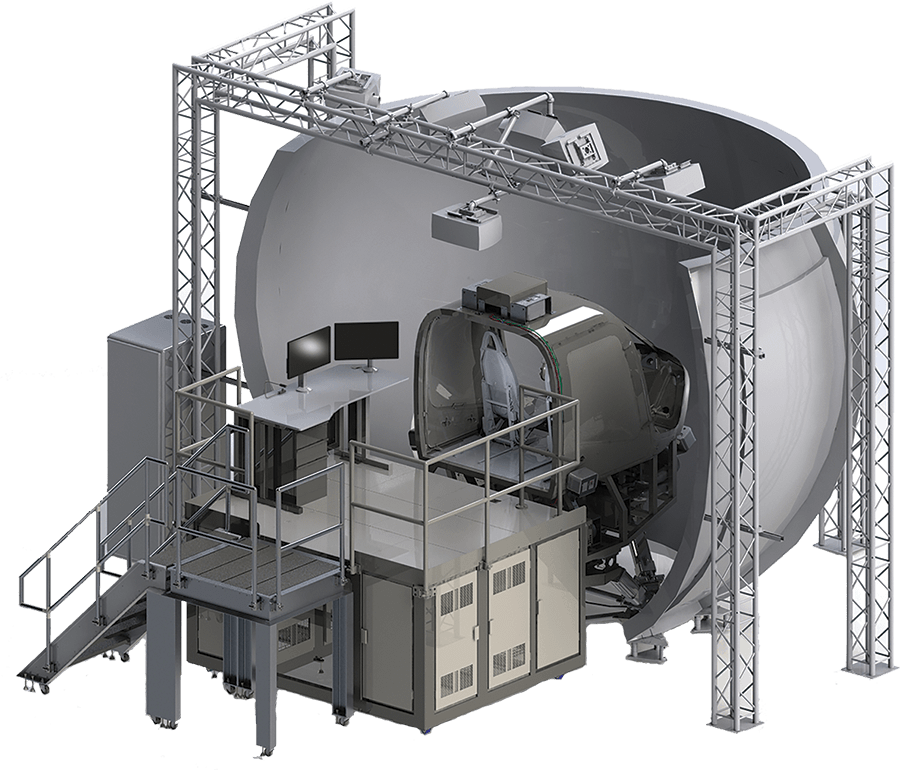
Rotorcraft Mini Motion
Features:
- 200° X 80°
- 6 DOF Mini-Motion
- Active
- Yes
- 24ft x 24ft x 15.7ft
(7.3m x 7.3m x 4.8m) - Initial/Recurrent Training
- FAA FTD 6/7
EASA FNPT II/III / FTD 2/3
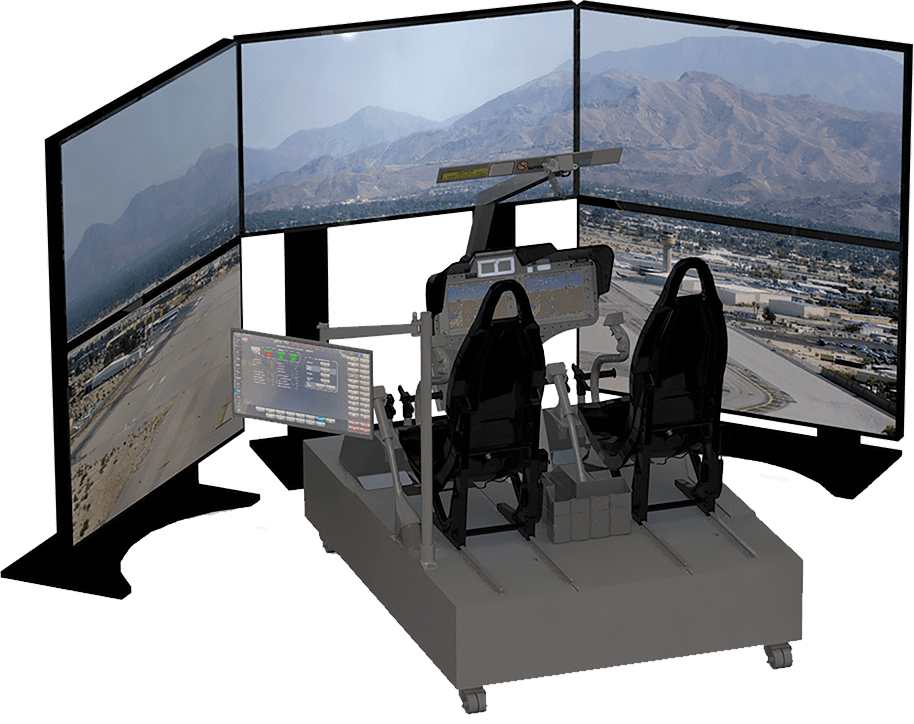
Rotorcraft 5 Screen
Features:
- 60" HD Televisions
- None
- Active
- No
- 13.5ft x 14.8ft x 8.2ft
(4.1m x 4.5m x 2.5m) - Procedural Training
- FAA FTD 5
EASA FTD 1
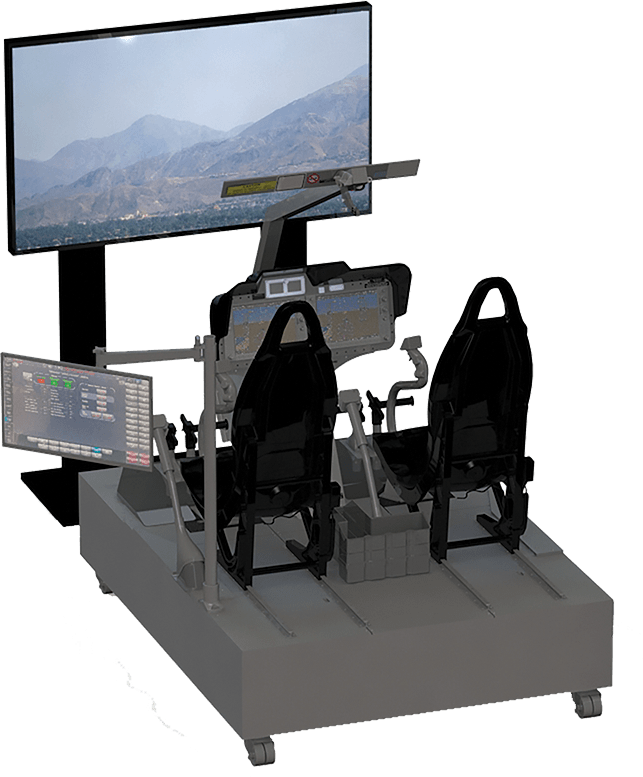
Rotorcraft 1 Screen
Features:
- 60" HD Television
- None
- Active
- No
- 13.5ft x 14.8ft x 8.2ft
(4.1m x 4.5m x 2.5m) - Procedural Training
- FAA FTD 5
EASA FTD 1
SIMULATOR DETAILS
The price range for the Integra Aura™ and Integra Horizon™ simulators varies based on the complexity and configuration. While simulator components such as the addition of a motion system or enhanced visual system make up much of the cost variations, the type of avionics and certification level of the device can also affect price. Other factors that drive pricing include optional avionics, software and/or hardware.
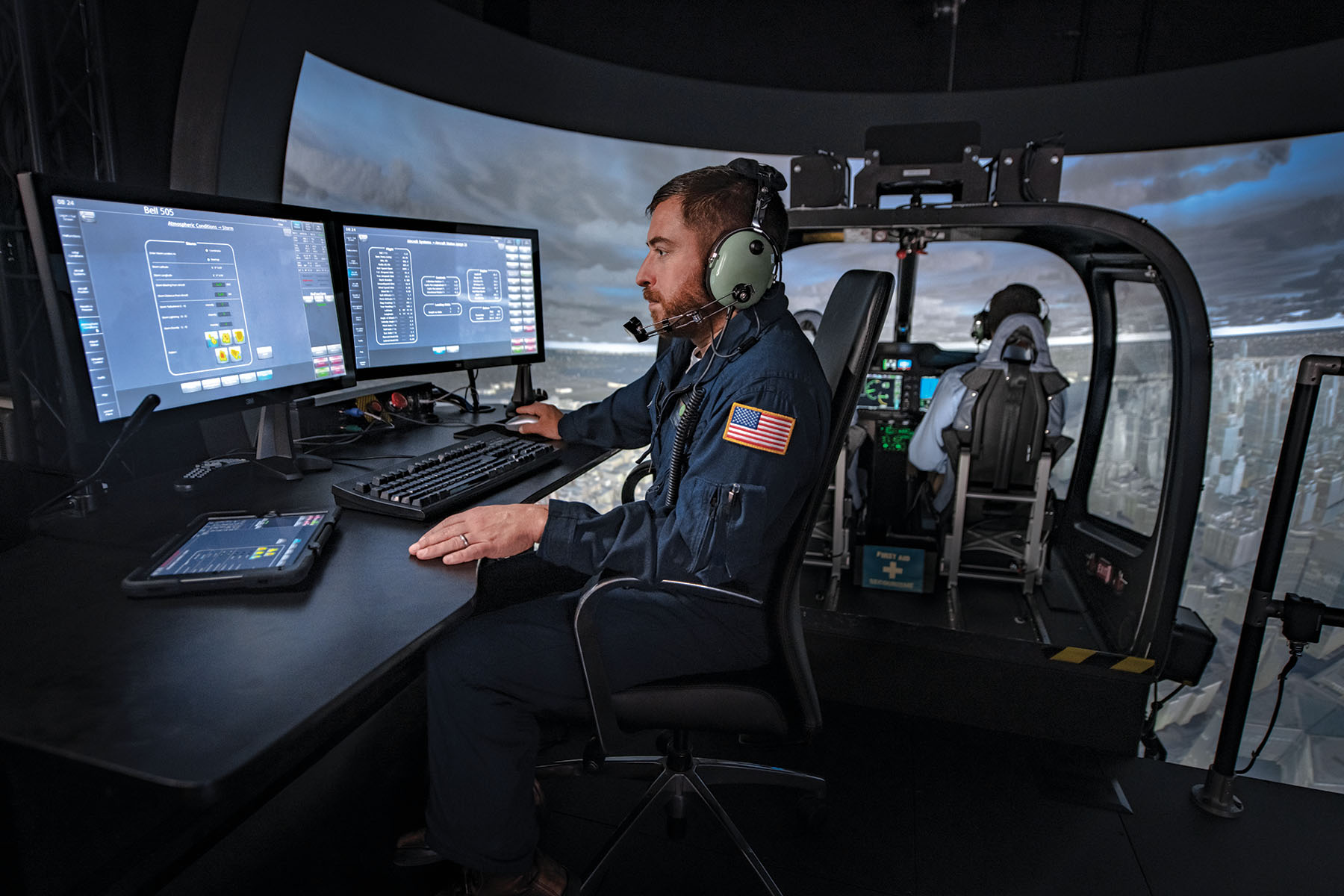

SIMULATOR ROOM
Simulator room sizes vary greatly depending on the type of FTD. The most basic FTDs with small visual system and no motion system can fit virtually anywhere in an existing facility. More complex FTDs with larger visuals and motion systems require more space. Power requirements and weight must also be considered with more complex devices.
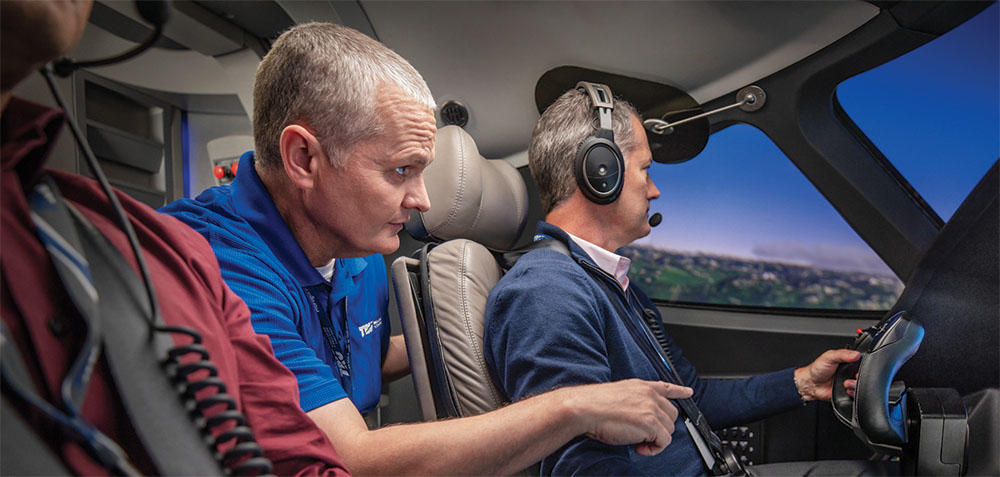
PRICE RANGE
The price range for TRU Simulation™ Integra Horizon™ and Integra Aura™ FTDs varies greatly depending on the level of device. While simulator components such as the addition of a motion system or enhanced visual system makes up much of the cost variations, the type of avionics and certification level of the device can also affect price. Other factors that drive pricing are optional avionics equipment and other simulation software and/or hardware add-ons.
Let's Work Together
TRU Simulation™ collaborates with you to select the right simulator solution — or combination of solutions — to fit your organization.
Get Started